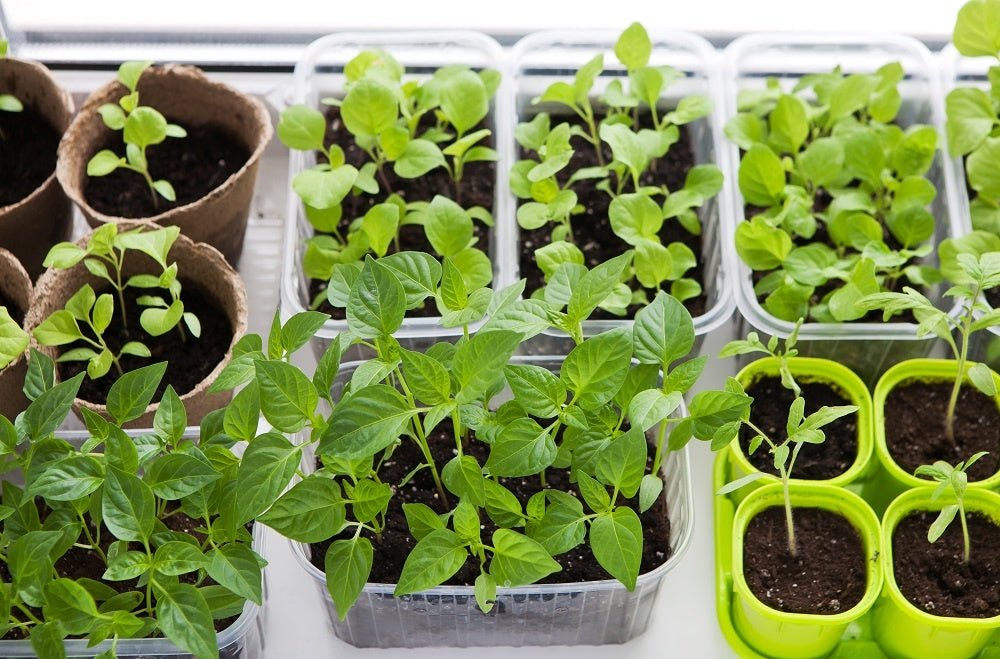
A Complete Guide to Indoor Gardening
Do you think of an indoor winter garden as pots of aromatic herbs on a sunny windowsill? Does that feel kind of limiting to you? Well, you can do a lot more than that!
n
Do you think of an indoor winter garden as pots of aromatic herbs on a sunny windowsill? Does that feel kind of limiting to you? Well, you can do a lot more than that!
Benefits of Indoor Gardening
There are many benefits to gardening inside during the coldest, darkest months:- You can garden year round – outdoors in summer, indoors in winter, or indoors all year!
- You will protect yourself against price increases in the supermarket when crops are hit by frost.
- You will be able to eat fresh, organic food.
- It's local and environmentally friendly, since the food grown is not being transported across the country or the ocean.
How to Start an Indoor Garden
Start your winter garden the way you would start any garden:- Ask yourself what you want to grow.
- Figure out how much space you have and how much you need.
- Make a budget for what you are willing to spend.
Indoor Gardening Basics
Generally, greens do well with little fuss in a bright window. With a more elaborate system, you can grow tomatoes, peppers, broccoli, root crops, and ornamentals. Other considerations will be heat and lighting:- Cool weather plants, such as greens, need temperatures of 50º-70º.
- Warm weather plants, such as tomatoes and peppers, need temperatures of 60º-80º.
- You may need supplemental heat. Indoor air is very dry in winter, so you may have to raise the humidity, too.
- Since most plants need at least 10 hours of sunlight a day for optimal growth, you will need to add artificial lighting.
Container Growing
The most compact garden is probably those pots of herbs on the windowsill. This set up takes little room and little money to put together. It is basic container growing. You will need a well-draining medium, a pot with holes in the bottom, a tray to collect extra water, heat, and light.- Read this post for details on growing an organic winter container garden.
- Watch this short video about growing under lights.
Hydroponics
A hydroponic system uses water to send nutrients to the plant roots. Instead of soil, the medium is perlite, vermiculite, gravel, sand, or rock wool. Nutrients are added to the water that is cycled through the system. A hydro set up can be small enough to fit on a countertop to grow a few greens and herbs. You can also get one large enough to fill your basement for growing tomatoes, cucumbers, greens, and broccoli. Hydroponic plants have all the same requirements as those grown in soil, but the water needs to be monitored daily for the proper pH. This is time consuming, so take that into consideration when you’re doing your homework on starting a winter indoor garden. You will also need to support these plants on a framework, since there is no soil to hold them in place. Hydroponics can be a pricey investment, but you buy it once and use it for years. The return will be food security with an abundance of fresh, organic food. If want to stretch your dollars or are a DIYer, you can build your own hydroponic system.Aquaponics
Aquaponics is the combination of hydroponics and aquaculture, or fish farming. Instead of adding nutrients to the water of a hydro system, you incorporate a fish tank. The fish waste in the water is your fertilizer. This nutrient-rich water recirculates from the tank, to the plants, and back to the tank. The crops act as filters, pulling the nutrients out of the water, and sending clean water back to the fish tank. You do not have to manually fertilize, lightening your workload. A farmer friend of mine built an aquaponics system in her greenhouse, using tilapia, which became another cash crop for her business. So you get two crops, whether you are just eating at home or selling. Here are a couple of good links about aquaponics and its benefits. With winter closing in on us, think about growing indoors this year. It’s not too late to get something set up. And the big bonus is, you won’t have to break it down in spring! You can garden indoors year round in containers or with hydroponics and aquaponics.Would you like to be the first to hear about our new products and more? Sign up for our Nature’s Path Newsletter.







